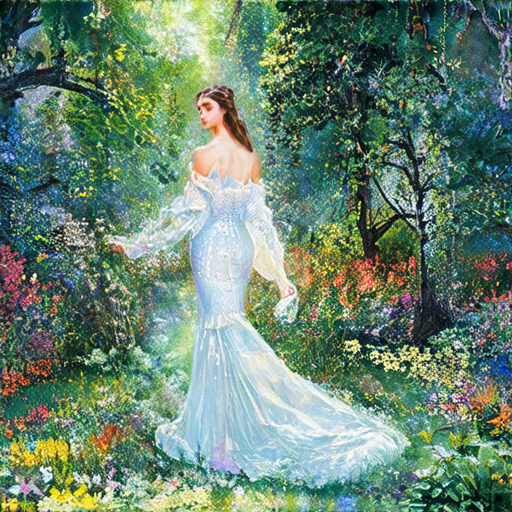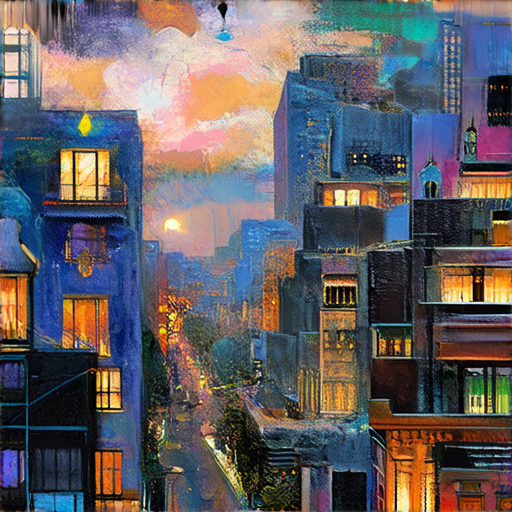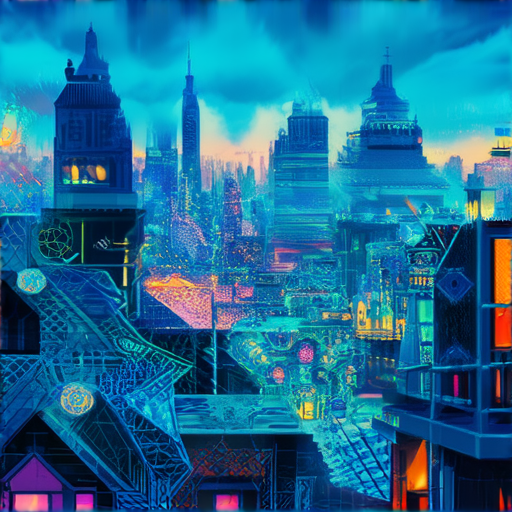Unlocking the secrets of fine art techniques has long been a coveted goal for aspiring artists, collectors, and enthusiasts alike. With its rich history and diverse range of styles, the world of fine art offers endless opportunities for creative expression and exploration. From the fundamental principles of composition to the intricacies of color theory, mastering fine art techniques requires a deep understanding of the elements, skills, and types of visual arts that comprise this complex and multifaceted field.

The Seven Elements of Fine Art
As an artist, understanding the fundamental elements of fine art can elevate your creations and enhance your overall artistic expression.
-
Line
A line is a continuous mark made on a surface by a drawing tool. Lines can vary in width, length, direction, and curvature, and are used to define shape, form, and movement in a composition.
-
Shape
A shape is a self-contained area with a defined boundary. Shapes can be geometric, such as squares and circles, or organic, like free-form shapes found in nature.
-
Space
Space refers to the negative areas between and around objects in a composition. Space can be used to create a sense of depth, distance, and atmosphere in a piece of art.
-
Value
Value refers to the lightness or darkness of a color or object in a composition. Value can be used to create contrast, mood, and emphasis in a piece of art.
-
Form
Form refers to the three-dimensional qualities of an object or shape. Form can be created through the use of lines, shapes, and values to suggest volume, mass, and texture.
-
Texture
Texture refers to the surface quality or “feel” of an object or material. Texture can be physical, such as rough or smooth, or visual, such as patterned or gradient.
-
Color
Color refers to the property of an object that is perceived by the eye as a result of the way it reflects or emits light. Color can be used to evoke emotions, convey meaning, and create harmony in a composition.
By mastering these seven elements of fine art, you’ll be able to create visually striking and emotionally resonant pieces that showcase your unique perspective and style.
Techniques of Art
As an artist, I’m often asked what techniques I use to create my artwork.
-
Drawing
Drawing is a fundamental technique used by artists to create two-dimensional artworks. It involves using various tools such as pencils, charcoal, and ink to create lines, shapes, and forms on paper or canvas.
-
Painting
Painting is another popular technique used by artists to create colorful and expressive artworks. It involves applying paint to a surface using brushes, rollers, or other tools to create textures, patterns, and colors.
-
Sculpture
Sculpture is a three-dimensional technique used by artists to create objects or figures using various materials such as clay, stone, wood, or metal.
-
Printmaking
Printmaking is a technique used by artists to create multiple copies of an image or design. It involves transferring ink onto a surface using a plate or block, which can then be printed onto paper or fabric.
-
Photography
Photography is a modern technique used by artists to capture images using cameras and digital technology. It allows artists to experiment with lighting, composition, and editing to create unique and captivating photographs.
Exploring Art Forms and Inspiration
At Artfull Journey, we believe that art is a journey of discovery and creativity. We offer a variety of resources and inspiration for artists and art enthusiasts, including:
- Tutorials and workshops on various art techniques and mediums
- Articles and blog posts on art history, theory, and criticism
- Visual storytelling and creative processes
- Exploration of art culture and trends
Learning from Others
We recognize that there are many talented artists and art educators out there who share our passion for art. Some notable examples include:
- The Art Students League of New York, which offers classes and workshops for artists of all levels
- The National Gallery of Art, which provides educational resources and exhibitions for art lovers
- The Metropolitan Museum of Art, which offers online courses and lectures on art history and appreciation
Getting Started
If you’re interested in exploring the world of art, here are some steps you can take:
- Experiment with different art techniques and mediums
- Take classes or workshops to learn from experienced artists and instructors
- Join online communities and forums to connect with other artists and art enthusiasts
- Visit museums and galleries to see original artworks and learn from experts

The Seven Major Forms of Art
As an artist, understanding the different types of art can help you develop your skills and style.
-
Painting
Painting is a timeless medium that has been used to express emotions, tell stories, and capture moments in history. From the intricate details of Renaissance masterpieces to the bold brushstrokes of abstract expressionism, painting continues to evolve and captivate audiences worldwide.
-
Sculpture
Sculpture is a three-dimensional art form that pushes boundaries and challenges perceptions. Whether carved from stone, molded from clay, or assembled from found objects, sculpture invites viewers to engage with its texture, shape, and space.
-
Photography
Photography is a modern art form that captures the world around us. With the rise of digital technology, photography has become increasingly accessible, allowing artists to experiment with lighting, composition, and narrative.
-
Dance
Dance is a dynamic and expressive art form that tells stories, evokes emotions, and celebrates movement. From classical ballet to contemporary hip-hop, dance has the power to unite cultures and transcend borders. -
Music
Music is a universal language that speaks to our souls. Whether performed live or recorded, music has the ability to evoke emotions, spark memories, and bring people together. -
Theater
Theater is a collaborative art form that combines acting, directing, and design to create immersive experiences. From Shakespearean drama to avant-garde experimentation, theater continues to push boundaries and challenge audiences. -
Cinema
Cinema is a visual art form that tells stories, explores themes, and transports viewers to new worlds. With the advent of film technology, cinema has evolved into a global phenomenon, captivating audiences worldwide.

Skills Needed for Fine Art
To excel in fine art, I believe you’ll need:
- Creativity – A unique perspective and ability to think outside the box.
- Talent – Natural ability and skill in drawing, painting, or sculpting.
- Practice – Regular dedication to honing your craft and developing your style.
- Patience – Understanding that mastering fine art takes time, effort, and perseverance.
- Observation – Developing your observational skills to accurately depict the world around you.
- Experimentation – Willingness to try new techniques, mediums, and styles to find what works best for you.
- Criticism – Ability to receive constructive feedback and use it to improve your work.
- Business Skills – Understanding of marketing, sales, and entrepreneurship to succeed as an artist.
- Time Management – Ability to balance creative pursuits with administrative tasks and responsibilities.
- Networking – Building relationships with fellow artists, galleries, and collectors to advance your career.
Additionally, staying up-to-date with the latest trends, techniques, and technologies in the art world can help you stay competitive and inspired.
As an artist, it’s essential to continuously challenge yourself, take risks, and push beyond your comfort zone to grow and evolve as a creator.
By combining these skills with passion, dedication, and hard work, you can unlock your full potential and achieve success in the fine art world.
What Are Soft Skills?
As an artist, I’ve come to realize that having the right combination of hard and soft skills can make all the difference in achieving success in my career.
- Definition: Soft skills refer to non-technical abilities that are valuable in personal and professional settings, enabling individuals to interact effectively with others and navigate complex situations.
- Examples: Communication, teamwork, adaptability, problem-solving, time management, leadership, and emotional intelligence are just a few examples of essential soft skills.
The Importance of Soft Skills in the Workplace
While technical skills may get you hired, soft skills are what set you apart as a valuable team member and leader.
- Improved Collaboration: Effective communication and teamwork enable artists to work seamlessly with clients, colleagues, and freelancers, resulting in better project outcomes.
- Better Time Management: Prioritizing tasks, meeting deadlines, and managing stress are crucial skills for artists who need to balance multiple projects and responsibilities.
- Increased Adaptability: Artists must be able to adjust to changing circumstances, such as last-minute client requests or unexpected setbacks, to deliver high-quality work.
Developing Soft Skills as an Artist
To succeed in today’s competitive art market, it’s essential to develop and hone your soft skills.
- Practice Active Listening: Pay attention to feedback, ask questions, and clarify expectations to ensure you understand client needs and preferences.
- Cultivate Emotional Intelligence: Develop self-awareness, empathy, and social skills to build strong relationships with clients, colleagues, and peers.
- Seek Feedback and Constructive Criticism: Regularly solicit feedback from mentors, peers, and clients to identify areas for improvement and refine your skills.
Conclusion
By focusing on developing your soft skills, you’ll become a more effective, efficient, and successful artist, capable of delivering exceptional results and building lasting relationships with clients and colleagues alike.

Does Fine Arts Require Math?
As an artist, I often get asked whether fine arts requires math. While many people assume that math is only necessary for sciences, it plays a crucial role in various aspects of art.
- Geometry and Composition: Understanding geometric shapes and proportions is essential for creating balanced and visually appealing compositions. Artists use mathematical concepts to divide space, create symmetry, and balance elements within their artwork.
- Color Theory: Color theory involves understanding color relationships, harmonies, and contrasts. Math helps artists mix colors, predict how colors will interact, and create cohesive palettes.
- Measurement and Scale: Accurate measurements and scaling are critical in art, particularly when working with large-scale projects or reproducing images. Math ensures that proportions remain consistent and sizes are correct.
While math may seem intimidating, it’s not necessarily about solving complex equations or memorizing formulas. Rather, it’s about applying basic mathematical concepts to enhance your artistic skills and creativity.
Why Math Matters in Fine Arts
- Develops Critical Thinking: Math encourages critical thinking, problem-solving, and analytical skills – all valuable assets for artists.
- Enhances Creativity: By understanding mathematical principles, artists can explore new ideas, experiment with different techniques, and push boundaries in their work.
- Improves Technical Skills: Math helps artists master technical skills, such as drawing, painting, and sculpting, which are essential for producing high-quality artwork.
Conclusion
In conclusion, math is an integral part of fine arts, playing a vital role in composition, color theory, measurement, and scale. By embracing math, artists can develop their critical thinking, creativity, and technical skills, ultimately producing exceptional artwork.

0 Comments